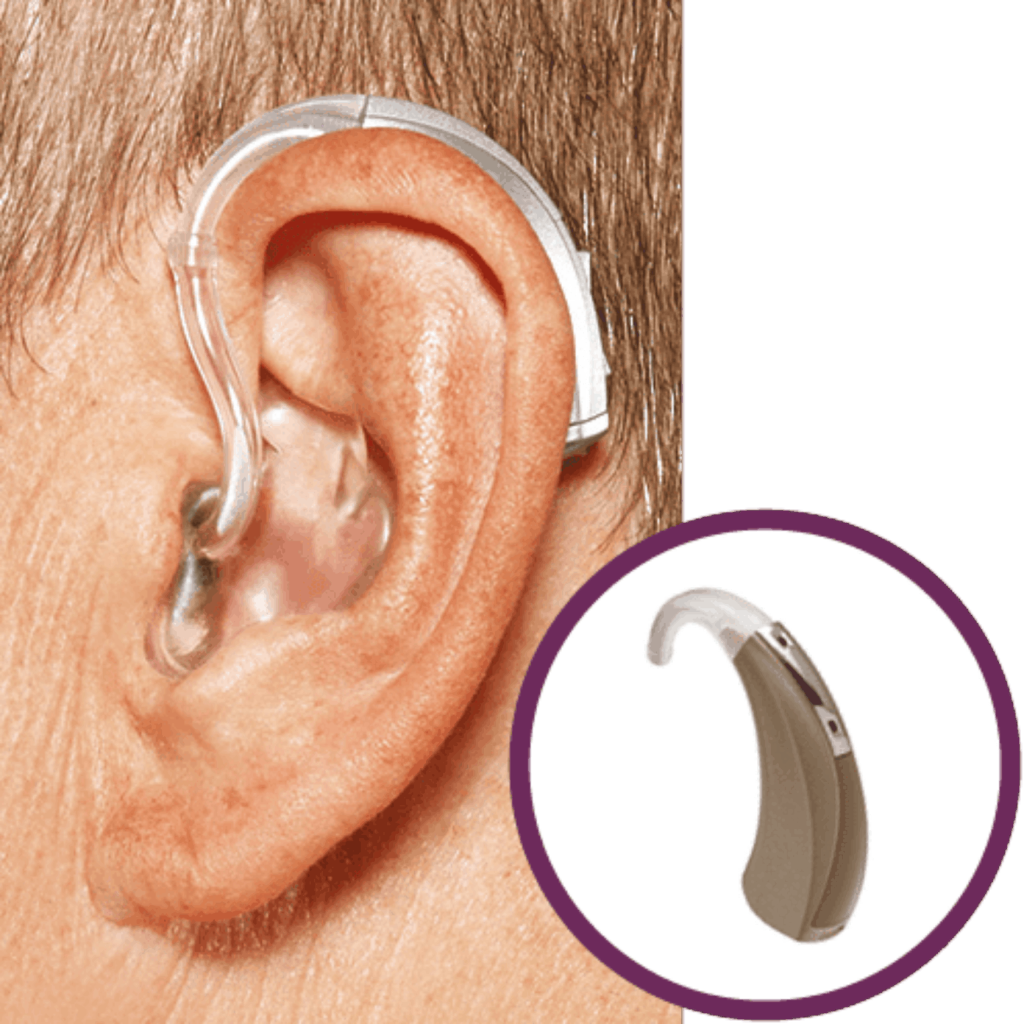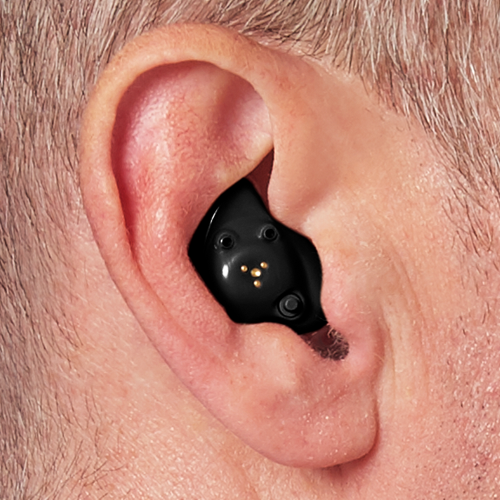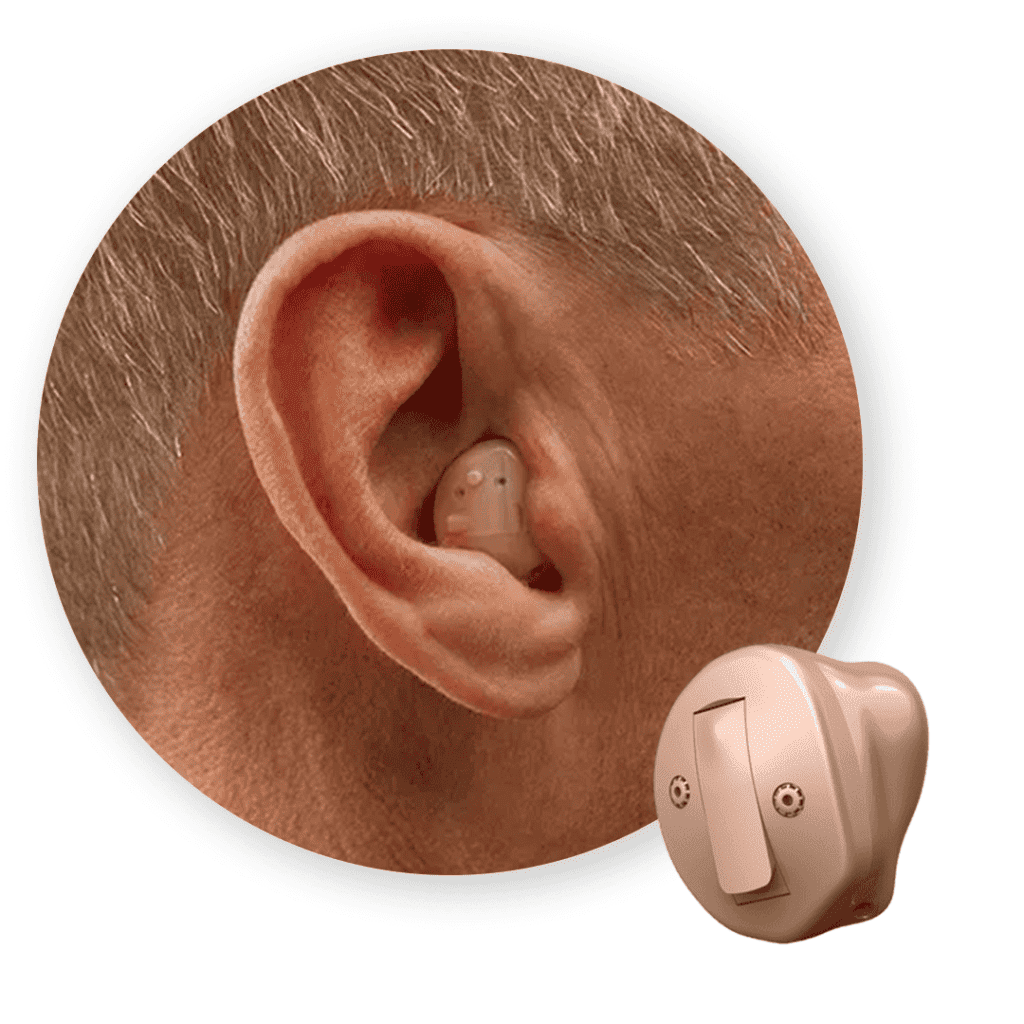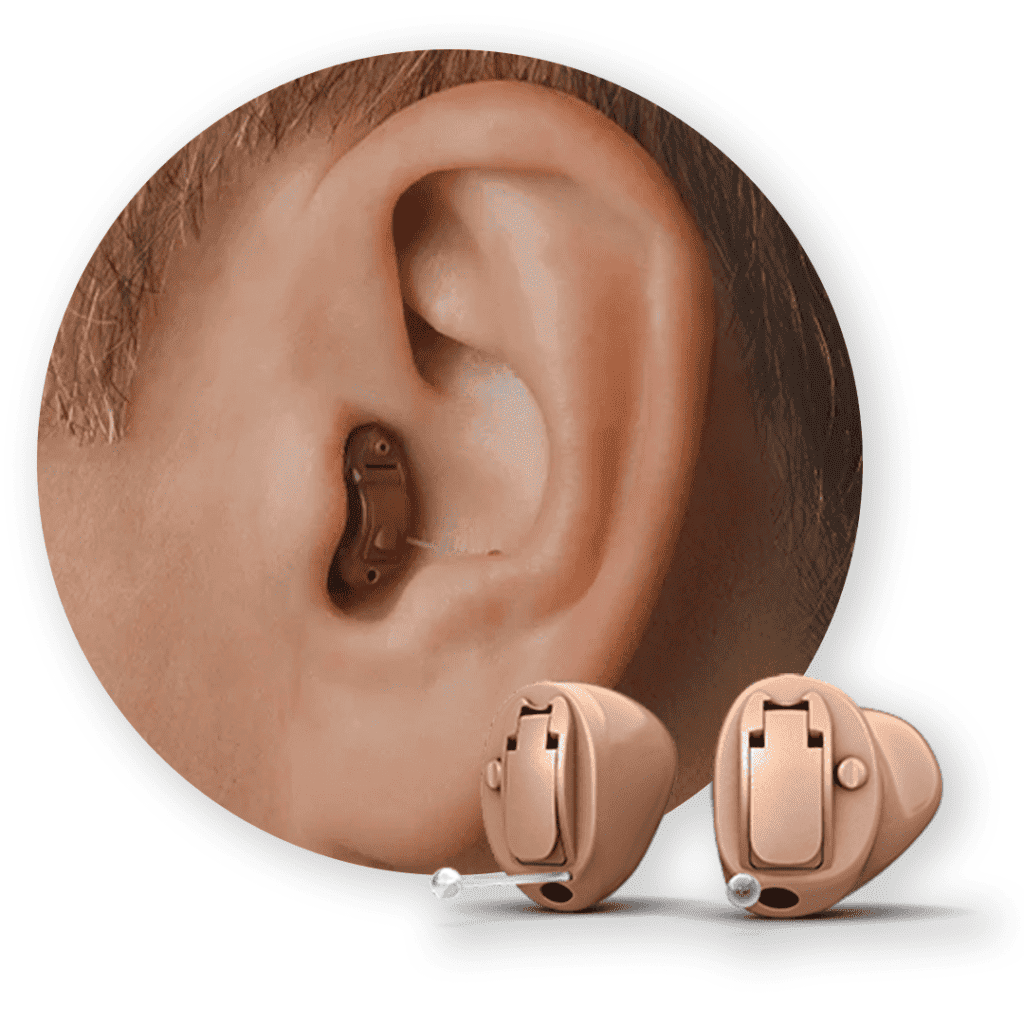Hearing aids come in many styles, including:Behind-the-ear (BTE)A hard plastic case worn behind the ear that connects to an earmold that fits inside the outer ear. BTEs are suitable for all ages and can be used for mild to profound hearing loss. In-the-ear (ITE)A custom-made device that fits completely inside the outer ear. ITEs are available in full shell and half shell styles, and can be used for mild to severe hearing loss. In-the-canal (ITC)A hearing aid that fits in the lower part of the outer ear bowl. ITC hearing aids are slightly larger than completely-in-canal (CIC) hearing aids and can be used for mild to moderate hearing loss. Completely-in-canal (CIC)A hearing aid that is nearly hidden in the ear canal and is used for mild to moderate hearing loss. Receiver-in-the-ear (RITE)A small and discreet hearing aid that consists of a tiny housing containing all electronics except the receiver, which is positioned behind the ear. RITEs can be used for mild to moderately severe hearing loss. Microphone-in-helix (MIH)A hearing aid with a microphone located outside of the hearing aid shell and inside the top fold of the external part of your ear

Behind-the-ear (BTE) hearing aids are a type of hearing aid that sit behind the ear and are connected to an earmold or earpiece by a tube: BTE hearing aids are suitable for people of all ages and can help with a wide range of hearing loss, from mild to severe. They are the most widely used hearing aid on the market. Here are some features of BTE hearing aids:SizeBTE hearing aids come in many sizes, shapes, and colors. Some newer models are smaller and more streamlined. BatteryBTE hearing aids can have large batteries, either disposable or rechargeable. AmplificationBTE hearing aids can provide more amplification than other types of hearing aids. Wind noiseBTE hearing aids may pick up more wind noise than other types of hearing aids. CostBTE hearing aids can range in cost from $1,000 to $6,000 a pair, depending on the device and technology level. Some disadvantages of BTE hearing aids include:They can be visible.They can feel uncomfortable or stifling.They can cause feedback if they are old models or the ear molds are fitted incorrectly.They can limit space for eyeglass wearers.

AI Overview+3In the Ear (ITE) Hearing Aids Machine Price in IndiaIn-the-ear (ITE) hearing aids are custom-made hearing aids that are placed in the outer ear and ear canal. They are a discreet option that can help with mild to severe hearing loss. Here are some things to know about ITE hearing aids:Types: ITE hearing aids come in two styles: full shell and half shell. Full shell ITEs fill most of the outer ear, while half shell ITEs only fill the lower part. Features: ITEs can have features like directional microphones, volume control, and background noise reduction. Battery life: ITEs typically have a battery life of 7–14 days, which is longer than smaller hearing aids. They can use a variety of batteries, including rechargeable options. Cost: ITEs can cost between $800–$3,000, depending on the features and the sophistication of the computer chip. Fit: A hearing care expert will take an impression or scan of the inside of your ear to ensure a proper fit. Wind noise: ITEs may pick up more wind noise than smaller hearing aids. Earwax: ITEs can be susceptible to earwax clogging the speaker.

Custom hearing aids that rest comfortably in your ear canal. In the canal (ITC) hearing aids from Starkey are right for mild to mildly severe hearing loss

Completely-in-the-canal (CIC) hearing aids are small, custom-made hearing devices that fit inside the ear canal. They are designed to improve hearing for people with mild to moderate hearing loss. Here are some features of CIC hearing aids:Discreet: CIC hearing aids are the smallest and least visible type of hearing aid. Custom-made: CIC hearing aids are molded to fit the wearer’s ear canal. Advanced technology: CIC hearing aids can include noise reduction and feedback cancellation. Natural sound quality: The proximity of the CIC to the eardrum allows for a more natural hearing experience. Less likely to pick up wind noise: CIC hearing aids are less likely to pick up wind noise. Some disadvantages of CIC hearing aids include:Batteries: CIC hearing aids use small batteries that can be difficult to handle and have a shorter life.Features: CIC hearing aids often don’t include extra features like volume control or a directional microphone.Earwax: CIC hearing aids can be susceptible to earwax clogging the speaker. Some brands that offer CIC hearing aids include: Audibel, Bernafon, Rexton, and Starkey.